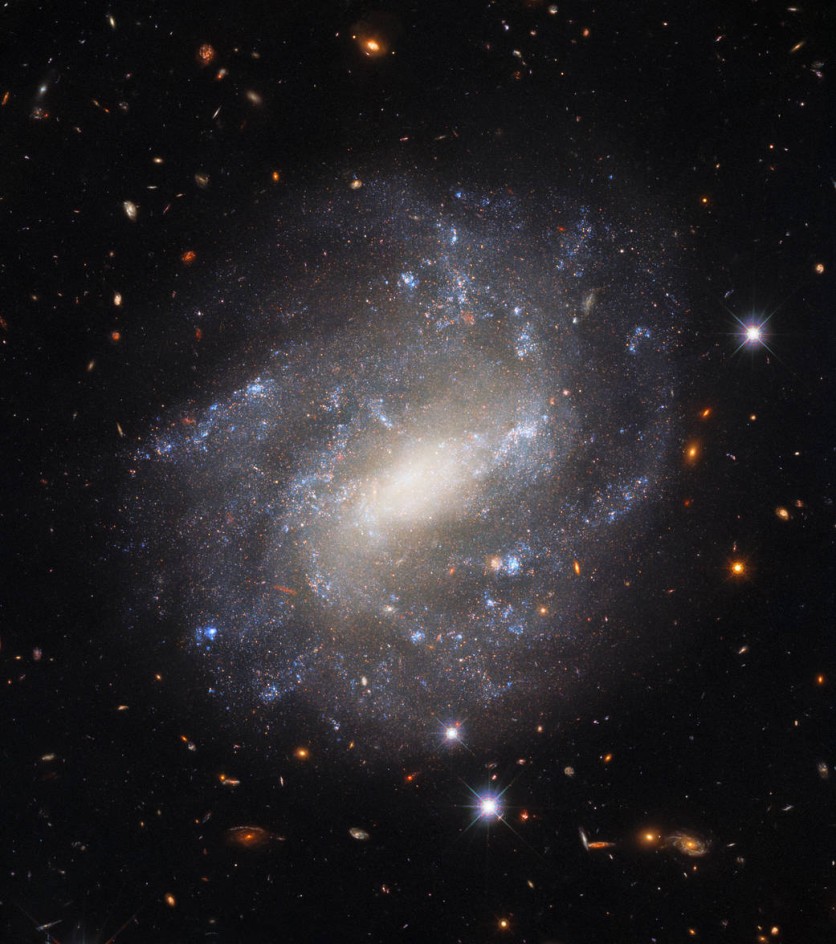NASA's Hubble Space Telescope spotted a blazing heat from a bright, lonely spiral galaxy called UGC 9391. But even though it lacks a companion, it serves as a guiding light for every astronomer who is measuring the universe's expansion.
This lone galaxy was photographed by the Wide Field Camera 3 on board the Hubble Space Telescope. It lies 130 million light-years away from Earth, near the north celestial pole in the constellation Draco.

Starry Spiral Arms
UGC 9391 flexes its starry spiral arms in the photo against a backdrop of far-off galaxies, which are only visible as faint swirls or smudges because of their great distances from our planet.
However, the image also includes other nearby stars in the foreground that are significantly brighter. Diffraction spikes, conspicuous spikes produced by light interacting with the inner workings of Hubble's secondary mirror supports, are ringed around these bright nearby stars.
Space.com noted that the light of some stars in galaxy UGC 9391's unique beacons since astronomers have looked into this patch of sky between the Big Dipper and Little Dipper.
Cepheid variable stars and a Type IA supernova are only two of the interesting light sources that make up galaxy UGC 9391, according to the European Space Agency (ESA). These sources aid astronomers in calculating astronomical distances.
Brightness changes in stars are known as variable stars. Cepheids fall under the category of intrinsic objects, which means they do not, for example, orbit a star and occasionally block its light, as per Space.com.
Instead, it is a well-known phenomenon that these strange stars vary in size and brightness on their own. As a result, their brightness may be used to accurately estimate the galaxy's distance.
Cosmic Distance Ladder
The "Cosmic Distance Ladder," a system of linked measurements that enables astronomers to calculate the distances of the most distant astronomical objects, was built by scientists using a sequence of Hubble images.
Only relatively close objects, or those that are less than around 3,000 light-years away, can be directly measured in terms of distance in astronomy. Astronomers rely on a set of measurable correlations set against nearby objects for distances beyond this.
UGC 9391 ultimately helped astronomers by offering a natural laboratory for the study of two measuring techniques-supernova explosions and Cepheid variables-and thereby improved their distance calculations, according to NASA.
A strange Type Ia supernova in the galaxy UGC 9391 included a white dwarf, which is a stellar corpse feeding on its partner star like a zombie. The white star's hunger continues to strain the binary system until the dead gain a mass equal to around one and a half suns.
NASA noted that one of Hubble's main scientific objectives is to calculate how quickly the cosmos is expanding by increasing the accuracy of distance measurements.
Related Article : NASA's Hubble Space Telescope Captures a Strange Astronomical Explosion Surrounding a Young Star
This article is owned by Tech Times
Written by Joaquin Victor Tacla
![Apple Watch Series 10 [GPS 42mm]](https://d.techtimes.com/en/full/453899/apple-watch-series-10-gps-42mm.jpg?w=184&h=103&f=9fb3c2ea2db928c663d1d2eadbcb3e52)



